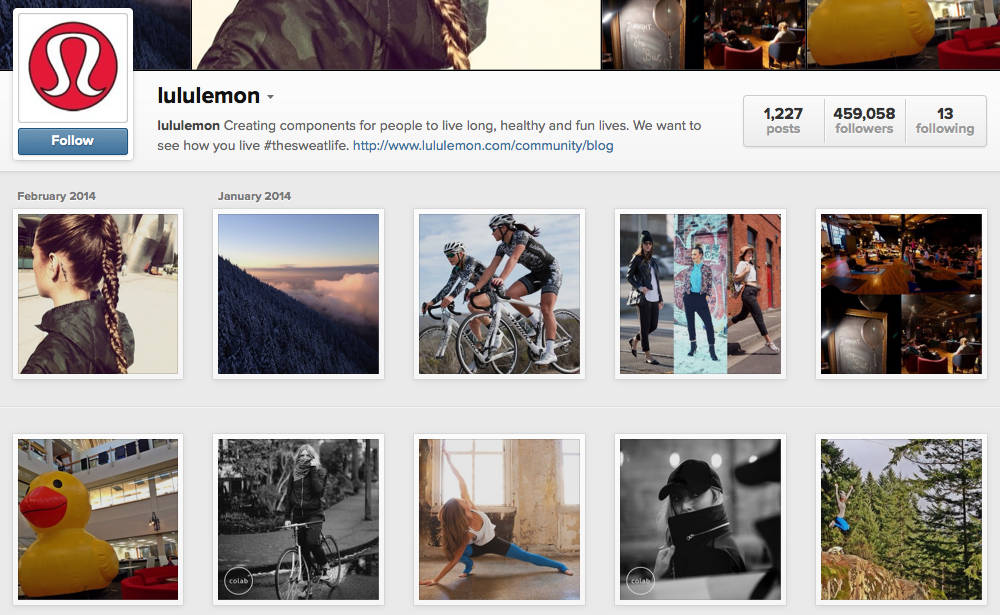The Super Bowl is known for two things: the football game and the commercials that air during it.
While this year’s Super Bowl proved to be lackluster in so far as the game was concerned, a number of commercials captured viewers’ hearts for one very special reason: they told human stories.
“Puppy Love” and “A Hero’s Welcome” — two Budweiser ads — tugged at the heartstrings by telling stories of love, heroism, and devotion. Without a word of dialogue, a Chevrolet commercial called attention to the plight of those suffering from cancer.
When done well, social media marketing has the capacity to tell human stories, too.
This article outlines seven ways to use social media to tell stories that connect with customers, build brand affinity and loyalty, and promote product sales.
1. Know your Marketing Goal
The first priority is to know the marketing goal you want to achieve through your use of social media. The goal will help you determine and frame the stories you tell.
If the goal is to sell more products, then stories may relate to your customers’ use of them. If it is to build affinity, stories may take the form of charitable causes your business supports or ways in which your products make life better.
Knowing your marketing goal will provide direction for the narrative that follows.
2. Incorporate Storytelling Elements
According to Copyblogger, the content marketing blog, every story needs five elements: a hero, a goal, an obstacle to overcome, a mentor, and a moral.
In marketing, your customer is the hero; the goal has to do with what the hero-customer hopes to achieve by using your products; the obstacle is the problem your product will solve; and your business is the mentor that guides consumers through the purchase decision process.
Finally, the moral of the story is a call-to-action that tells the audience what the next step should be, whether it’s to visit your website, purchase a product, or get more information.
3. Personalize the Story
People relate better to other people than to brands. That’s one reason companies like Dell and Comcast link employee names to their brand on Twitter. For example, for Dell, program manager Stefanie Nelson’s Twitter handle is @StefanieAtDell. Visit the @comcastcares Twitter account and you will see the face and name of the company’s chief customer support representative, Bill Gerth.
Canadian health and beauty ecommerce company Well.ca uses Facebook photo albums to highlight employee activities such as in these examples: Incredi-BOWL Holiday Party! and Toronto Office Potluck.

Well.ca spotlights employee activities using Facebook photo albums.
4. Utilize a Variety of Media Formats
You can tell stories using the written word, online video, photos, infographics and other formats.
Retailer lululemon uses a blog and photo-sharing site Instagram to create stories in support of its mission to help people “live long, healthy and fun lives.”

lululemon employs a variety of media formats to support its mission.
A story told one way can be retold in another. For example, a blog post could be turned into a podcast or slide show while a series of posts could be combined to create an ebook.
One advantage to repurposing content is that you can distribute it on different channels, which opens the door to reach new audiences who may be unfamiliar with your company.
5. Leverage Social Network Strengths
When it comes to storytelling, each social network has its own set of strengths and weaknesses. Facebook Page Timelines are well suited for sharing text-based status updates, images, and videos that can tell a story over a period of time. (Facebook even uses the term “story” to define content posted there.) Its “Milestone” option enables brands to share important moments in the life of the company such as the date of its founding.
You can use Pinterest’s scrapbook-style, topically based boards to create a collection of images accompanied by brief descriptions that tell a story at a glance. Twitter’s 140-character limit makes it ideal for sharing news and announcements in real-time to capture readers’ attention, if only for a short time.
6. Allow Customers to Tell Their Stories
One of the best ways to tell stories through social media is to enable your customers to share their stories via photos, video, status updates, or comments.
SiteSell, a company that provides website building software for online businesses, includes customer testimonials in Timeline posts as a way to create an emotional connection and build trust.

SiteSell lets customers help tell its story.
7. Tell Living Stories
People don’t spend hours a day on social networks just to read what happened in the past,. They want to know what is taking place currently.
For that reason, it’s vital that you update your social network profiles with fresh content on a regular basis.





